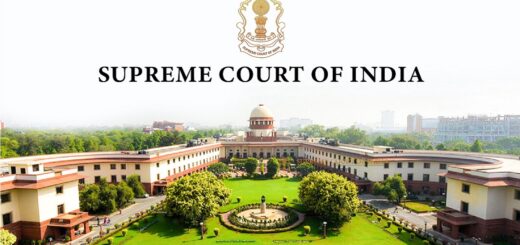Section 27 of the Evidence Act states that a disclosure statement cannot be used as evidence if the claimed discovery did not happen as a result of that statement, according to the Supreme Court.

The Supreme Court ruled that a disclosure statement cannot be used as evidence if the supposed discovery did not happen because of that statement. In 1997, the Court cleared two individuals convicted under Section 304 Part I of the IPC, emphasizing that courts should be careful not to treat a simple recovery case as a discovery case to apply Section 27 of the Indian Evidence Act, 1872. The judges noted that the disclosure statement was taken at the police station, while the recovery occurred at a location indicated by the accused on the way to the station. Justices J.B. Pardiwala and Manoj Misra stated, “The disclosure statement was not valid as evidence since the alleged discovery did not follow from it. The statement was recorded at the police station, and the recovery was from a place shown by the accused while going to the station. Thus, it was a recovery case, not based on the disclosure statement.”
AOR Nidhi represented the accused, and Advocate Anubha Dhulia represented the Respondent. An FIR was filed by the deceased’s cousin, claiming the accused had killed him. Both the Sessions Court and the High Court found the accused guilty, with the High Court changing the charge from Section 302 (Murder) to Section 304 Part I (Culpable Homicide Not Amounting to Murder) of the IPC.
The Supreme Court overturned the Uttarakhand High Court’s decision that changed the Appellants’ conviction from Section 302 of the IPC to Section 304 Part I of the IPC. The Court found that the prosecution did not provide enough circumstantial evidence to prove the accused’s guilt, emphasizing that the evidence must create a complete chain that clearly indicates guilt.
The Court pointed out that the evidence showing the deceased was last seen with the Appellants was not definitive, as the location was far from where the body was discovered. Considering the significant time gap between when the deceased was last seen and when the body was found, the Court remarked, “A large time gap allows for the possibility of other factors, including actions by a third party.” The Court referenced its earlier ruling in Devi Lal v. State of Rajasthan (2019), stating that if there are two possible interpretations of circumstantial evidence—one suggesting guilt and the other suggesting innocence—the accused should receive the interpretation that favors them.
The Court warned against the improper use of Section 27 of the Evidence Act, 1872, while reaffirming its ruling in Geejaganda Somaiah v. State of Karnataka (2007). It stated that since this section is often misused by police, courts must be careful in how it is applied. The credibility of police evidence must be ensured, as this provision can be abused. However, this does not mean that any statement made under this section should be automatically doubted or dismissed just because it was given to a police officer during an investigation. The court must be careful not to let the prosecution misrepresent a simple recovery as a significant discovery to fit the criteria of Section 27.
The Bench noted, “Often, a person may walk alongside a stranger on a public path for a long time without speaking. Similarly, exchanging greetings with someone does not mean they are together.” As a result, the Court concluded, “Since the prosecution did not prove the connection of incriminating evidence, the accused are entitled to be cleared of the charges against them. Therefore, the appeal is granted, the previous order is overturned, and the accused are acquitted.” Thus, the Supreme Court approved the Appeal.
Cause Title: Suresh Chandra Tiwari & Anr. v. State Of Uttarakhand (Neutral Citation: 2024 INSC 907)
Appearance:
Appellants: AOR Nidhi
Respondent: Advocate Anubha Dhulia; AOR Suveni Bhagat









